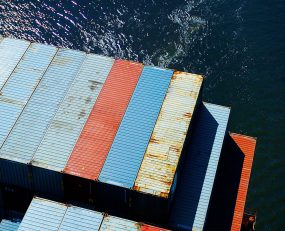
The problems of asymmetric demand continue to plague the world’s container transport sector, with a string of developments over the past week illustrating the problem of congestion within marine logistics at present.
One of the most high profile moves has been an investigation started on Friday (November 20), by the US Federal Maritime Commission concerning “policies and practices of those shipping companies related to detention and demurrage, container return, and container availability for US export cargoes”. American agricultural exporters in mid-Western states are complaining that they cannot obtain containers as shipping lines are moving them out of the US as quickly as possible, largely returning them to China in order to pick up more consignments. This means no containers for those furthest from ports and thus an inability of agricultural producers to export.
Elsewhere, both India and Bangladesh continue to experience severe problems both around their ports but also inland, much of it driven by the maldistribution of containers. Reports from India suggest that this is exacerbating the problem of blank sailings as shipping lines cannot find the containers to fill vessels. In Bangladesh, this is causing political problems as textile and clothing exporters protest at the impact on their businesses.
The cause of some of these problems is continuing COVID-19 related measures. For example, the port of Xingang has brought reefer operations to a near halt as the customs authorities inspect food cargoes for infection. This is amplifying reefer shortages. In Britain, the Port of Felixstowe is obstructed by thousands of containers holding PPE in demurrage, again aggravating congestion caused by high import demand.
However, the largest source of the problem seems to lie in continuing asymmetric demand across the Pacific. The West Coast ports in North America are experiencing double-digit percentage increases in imports, especially from China, with demand now washing into the East Coast ports which are now also seeing huge leaps in traffic.
The underlying economic reality is that the US is the demand driver of the world’s economy at present and the result is an agglomeration of containers on shipping routes into North America.
Source: Transport Intelligence, November 24, 2020.
Author: Thomas Cullen